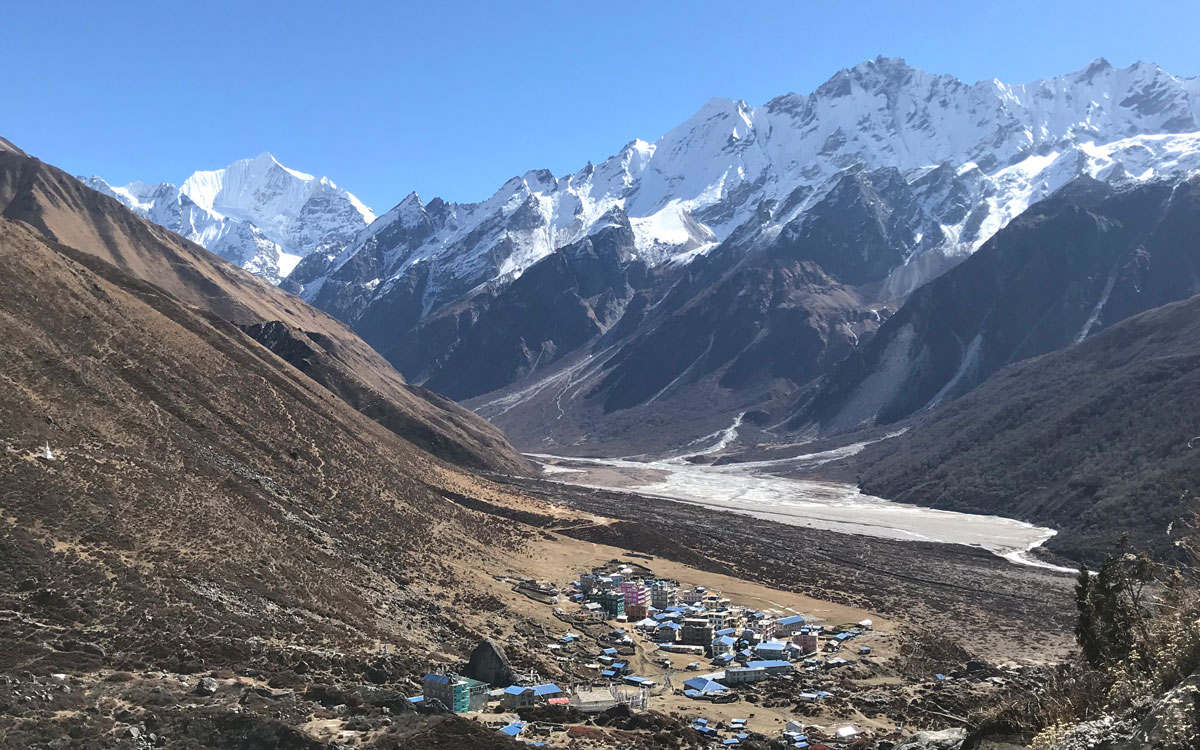Langtang region was once the third most popular trekking route in Nepal after the Everest and the Annapurna region. The national park, the picturesque view of the Himalayas, the holy Gosainkunda Lake, and the serene Kyanjin Gompa were always the major tourist attractions in Langtang area.
However, this suddenly changed after the major earthquake struck Nepal in 2015. The Langtang valley suffered a massive destruction with the avalanche of rock, ice, and snowfall off the southern side of Mount Langtang Lirung (7,227 m). All the houses were swept away and hundreds of people lost their lives in the incident. The guesthouses and the trails were badly affected too which require the trekking trails to be closed for a few months.
Lately, the trails are being reconstructed, and the guesthouses have been rebuilt. The Langtang region is catching the pace back again. The guesthouses, however, are very basic, more basic than the Khumbu region or the Annapurna region. The trails are a lot quieter and less crowded.
The guesthouses that have been reconstructed may not provide as many facilities as it did previously. However, before heading to the trails, it is necessary to grab some information regarding the teahouses and the lodges in this area.
Rooms and Beds
Most of the guesthouses rebuilt in the Langtang region have a similar setup of the rooms and the beds. The rooms are generally small and cozy providing two to three twin beds or a dormitory styled rooms with a table (rarely) to keep the bags. The beds are quite comfortable with a foam, a pillow, and a blanket. However, the blankets may not be as warm in the higher elevation hence taking a sleeping bag along is always the best idea.

If you do not have a sleeping bag, you can rent one from the office in additional charges. However, most of our package includes a sleeping bag and a down jacket included.
Dining hall and Food
Usually, the dining hall is a big room also known as the communal hall as the travelers sit together not only to enjoy the food but also to enjoy the chit chats and the stories that they have to share. The communal area is heated with firewood or cow dung cakes to maintain a warm temperature.

In the Langtang region, most of the teahouses provide only vegetarian meals. The facility of a non-vegetarian item is very minimum throughout the trail. They prepare pasta, noodles, momo, Dal-Bhat (rice, lentils, and curry) etc. Usually, the dinner is along the bonfire in the dining room and the kitchen is separate which is not expected to be entered into.
Toilets and Shower
Few guesthouses at lower altitude may comprise a western styled flushing toilet. Other than that, the teahouses will have squat toilets usually made up of a ceramic basin on the ground or few planks precariously positioned over a hole in the ground which is always outside of the room. Some guesthouses also sell toilet paper, however, carrying it oneself along with hand sanitizer and a towel would be more convenient and is highly recommended.

Talking about the shower, for every hot shower in the mountains, the guesthouses provide a bucket full of hot water which needs to be paid prior. The amount may vary in the guesthouses depending upon the increasing altitude.
Electricity and Charging Points
Electricity is available in the Langtang region, however, the charging ports may only be available in the dining hall. To charge mobile phones, camera, and other electronic devices, a certain amount of service charge is applicable which must be paid to the guesthouse team.

Bringing two and three pin adapters are rather recommended before heading to the trail. If you do not have an adapter, you can buy one in Kathmandu itself. Our guides can help you with them.
These are few of the things one must be aware of before heading to the trails of the Langtang region.





